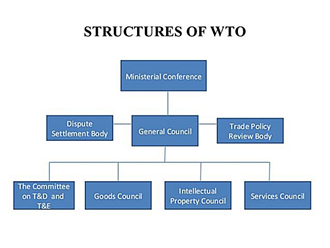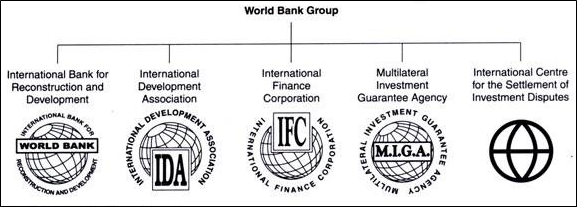Factors of production refer to the inputs used in the production of goods or services to make an economic profit.
In economics, factors of production are classified into four types:
1. Land
2. Labour
3. Capital (fixed as well as working capital)
4. Entrepreneurship

-
Land
It denotes the fixed cost incurred in an economic activity. Land has a broad definition as a factor of production and can range from agricultural land to commercial real estate to the resources available from a particular piece of land. Even, in the digital era, land may be considered as places where servers are placed for storage and routing of data.
-
Labour
It represents human effort, both physical and intellectual, used in the production process. It includes skills, talents, expertise, and time contributed by workers. Labor by an unskilled worker is typically paid lower wages. Skilled and trained workers are called “human capital” and are paid higher wages because of higher productivity of their work. Labour cost is also considered as variable cost for the firm as the unit of labour can be changed or altered in short-term as per the volume of production.
-
Capital
Capital generally refers to money. However, money is not considered part of the capital factor of production because it is not directly involved in production activity. Instead, it helps in acquiring things that are necessary for carrying out economic activity.
Broadly, capital is classified into two types: Fixed capital and Working capital
-
- Fixed capital refers to the assets or investments required to establish and run a firm, such as land, building, plant, machinery or equipment.
- Working capital is the cash or other liquid assets that a company utilises to finance day-to-day activities such as salary payment, raw material purchase, bill payment etc.
-
Entrepreneurship
It represents the ability to combine other factors of production effectively, take risks, and create new businesses or products. Entrepreneurs drive innovation and contribute significantly to economic growth by starting new ventures and finding opportunities.
Incomes of Factors of Production
- Rent is collected on Land which is given for economic activity.
- Labour is paid wages and salaries for working for the firm
- Interest is charged on the capital given to do business
- Any entrepreneurship is motivated by profits which are expected from economic activity.
Circular Flow of Income
The circular flow of income is a model that describes the movement of money, goods, and services within an economy. It illustrates how different sectors interact with one another to generate economic activity.
Various models of circular flow of income
- 2-sector model: Household and firms
Households: The sector where individuals live and consume goods and services. Households also supply labour to firms in exchange for wages.
Firms: Businesses that produce goods and services. Firms employ labour and other factors of production to create products for households to consume.
Flows in the 2-sector model
Goods and Services: Firms produce goods and services that are purchased by households in exchange for money (consumption expenditure).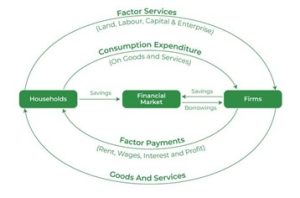
Factors of Production: Households provide factors of production (like labour, capital, and land) to firms. Firms pay for these inputs through wages, rent, interest, and profits.
Real Flow: The movement of goods and services from firms to households and factors of production from households to firms.
Monetary Flow: The flow of money from households to firms as payment for goods and services, and from firms to households as compensation for factors of production.
-
3-sector model: Household, firms, government and financial sector
Government: The government collects taxes from both households and firms and uses this revenue to provide public goods and services. It can also redistribute income through welfare and other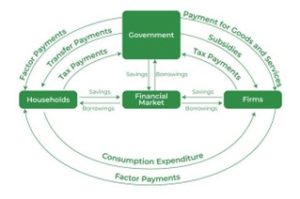 social programs.
social programs.
Financial Sector: Includes banks and other financial institutions where households save money and firms seek investment or loans. This sector facilitates the flow of capital within the economy.
-
4-sector model: Household, firms, government, financial sector and external sector
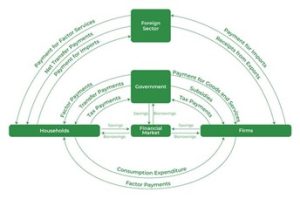
External Sector: Represents trade with other countries, including imports and exports. Households and firms buy goods and services from abroad (imports), and firms sell goods and services to other countries (exports).
This expanded model showcases a more comprehensive view of the economy, highlighting how government policies, financial activities, and international trade affect the flow of income and resources.
Spread the Word
